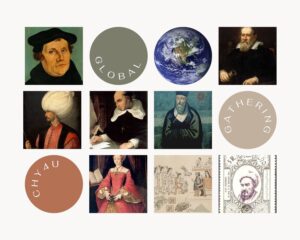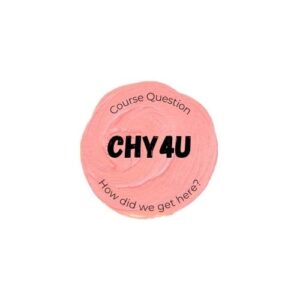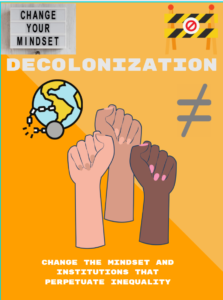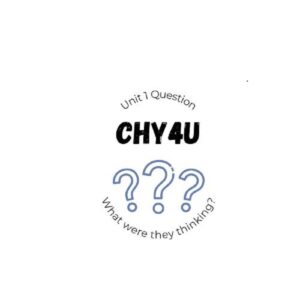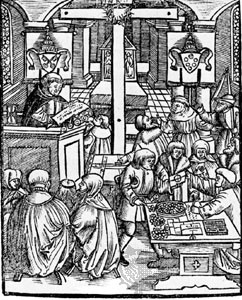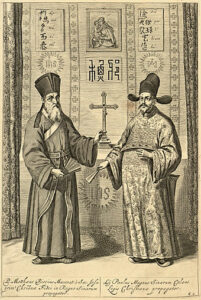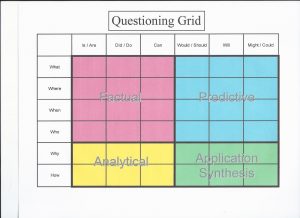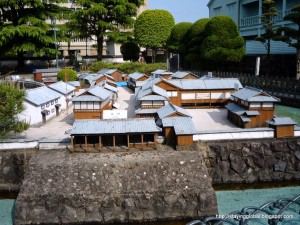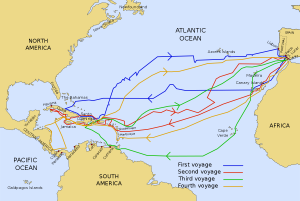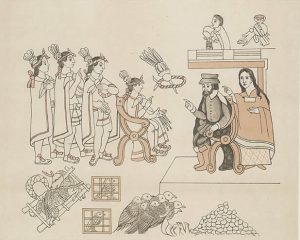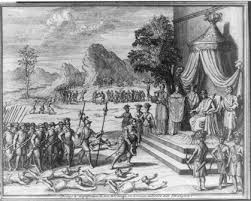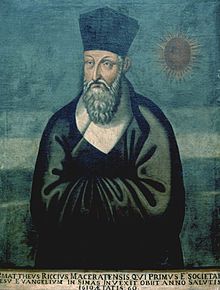Unit 1 = 1450-1650 (2023)
Welcome to World History.
This course focuses on a big thematic question: “how did we get here?” This year we will examine this through the decolonization lens.
In this unit, we’ll attempt to figure out, “what were they thinking?” They, meaning the people in the 1450 to 1650 time period.
CHY4U_Unit1_Handouts_Sept_2020
1. Intro to historical thinking concepts, inquiry, and primary evidence.
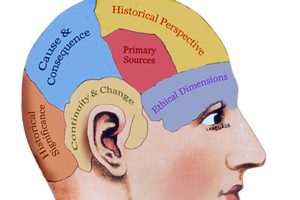
Canada’s History
Minds On: What’s the most important word (one word) in the study of history?
How did we get here? First we need to think about where “here” is, meaning what is the state of the world today, with a particular focus on decolonization.
https://docs.google.com/presentation/d/1O4aLnKVoa_8wSeQZ11NNDsxakhSnlbKve49aNDxEk6M/edit?usp=sharing (slides)
Watch this TVO video on decoding Canadian art. The subject is an Emily Carr painting in the Art Gallery of Ontario and how it is now presented.
Use your HTC handouts to help you figure out which HTC matches best with which image. First 6 pages in unit 1 handouts. CHY4U_Unit1_Intro_Activity
HTC guideposts: see this page
That leads to our first activity: an investigation into whether or not Moctezuma, the Aztec Emperor, had a zoo in Tenochtitlan.
Moctezuma’s Zoo Activity:
Moctezuma Zoo Student Materials
Conclusion on importance of evidence: we need to approach evidence carefully and cautiously. Who wrote it? How reliable is it? What are the biases in it (everything is biased)? How does one piece of evidence corroborate (confirm) another?
Most groups felt their zoo evidence was a 6-8 out of 10 in terms of reliability. There were some concerns about bias or embellishment, ulterior motives (for example, of Cortes in writing to the emperor), uncertainty of origin (the map that was published in Germany but of unknown origin).
We make decisions about certainty. Red light – uncertain. Yellow light – be cautious. Green light – go ahead. Most things in history are yellow!
2. Seven Cities in 1450
1450 – What was it like?
Beijing, Kyoto, Seville, Tenochtitlan, Constantinople, Venice, Timbuktu
7_Great_Cities_2018-19 (PPT with instructions and questions)
Context_for_Spanish_Treatment_of_Aztecs (some background for Tenochtitlan)
Seven_Cities_1450 (handout pages on 7 cities so you can see the images in colour)

Skill: Using criteria (one of the most important foundations of critical thinking). Criteria are standards – the standards by which you make decisions. For example, when you choose what to wear to school you may base your decision on criteria such as the weather, comfort level, style, etc.
Category ≠ criteria
Example: category = economic, criteria = prosperous trade
You can only rank by criteria, not by category.
Skill: Annotating.
For annotation, mark up your pages using symbols, key words, definitions, colours, connections to HTCs (and guideposts), PERSIAT, decolonization connections. Annotating should replace note-taking for in-class activities centered around the handouts. It’s very helpful for upcoming quizzes and tests: you don’t have to read over the whole page.
Sample criteria:
economic – open to trade, prosperous, prolific trade
political – efficient government that rules for the benefit of the people, stable government (probably best not to choose authoritarian government because most were at the time)
3. Religion in Europe: The Protestant Reformation and Its Effects
Five Significant World History Events Pulled from Seven Cities Activity
- The Renaissance
- Background on the Renaissance: The Middle Ages in Europe was a very sacred time (meaning almost everything related to religion – in this case Roman Catholicism). Some time toward the end of the late Middle Ages, especially in the wealthy Italian city states (such as Florence), educated and wealthy people began to be interested in more secular (not related to religion) matters such as philosophy, art, education, and classics (things from ancient Greece and Rome). This was called the Renaissance because it was considered (by later historians) to be the rebirth of interest in the classical world. During the Middle Ages, many regarded classical times as negative because they weren’t Christian – in fact, they called them pagan, a negative term applied to anyone non-Christian or who believed in more than one God. As we learn about the Protestant Reformation, it’s important to know that the criticism of the Catholic Church partially grew from this new way of thinking, often called Humanism.
- Textbook pages 15-23 will help you become familiar with the Renaissance if you wish.
2. The Spanish Inquisition shows the dominance of the Roman Catholic Church in Spain and how it become virulently intolerant of Jews and Muslims.
3. In China, the Mongols were overthrown by the Ming dynasty. China was the most prosperous and advanced place in the world.
4. The Byzantine Empire (the eastern portion of the Roman Empire, which was eastern Orthodox in religion and spoke Greek) was overthrown by the Ottomans, a rising Muslim power now centered in modern-day Turkey.
5. Spanish exploration of the New World (north, central and south America) began just as the reconquista (the Catholic unification of Spain) succeeded . We will see see how severely impacted the New World will be.
2. Martin Luther’s 95 Theses
CHY4U_Luther_PSD (PDF)
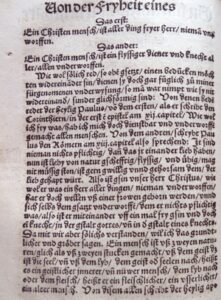
Minds On: imagine all of western Europe was yellow (Roman Catholic) in the year 1450. What could have happened to have changed it so much?
Skill: learning to annotate a PSD – write little notes to yourself ON your document – your PSD should not be naked. Be an active learner, not a passive body just sitting there in class.
HTCs: primary evidence, historical perspectives.
Skill: Contextualization – what was going on before and at the time of the writing of Luther’s 95 Theses and how did it affect the document and its bias.
CHY4U_Activity3_Luther_Bias_PPT_2019-1 (2)
- if you want to do background reading in the textbook on Luther and Protestantism, see pages 29-41. You can also check out this website.
- Don’t forget that we connected the battle for souls in Europe (Catholic vs. Protestant) to the exploration of the New World and Asia and the missionaries that followed.
- indulgence = “An indulgence is one way for the faithful to reduce the punishment they have to undergo for their forgiven sins.” (source)
3: What do you think this quote means? Who said it? In what context, perhaps?
“Since then your serene majesties and your lordships seek a simple answer, I will give it in this manner, plain and unvarnished: Unless I am convinced by the testimony of the scriptures or clear reason, for I do not trust in the Pope or in the councils alone, since it is well known that they often err and contradict themselves, I am bound to the Scriptures I have quoted and my conscience is captive to the Word of God. I cannot and will not retract anything.” (quoted in this source)
Make a heading for this list of bullet points
- translated the New Testament into German (from Greek) – which became known as the Luther Bible and sold nearly 500 000 by 1550. Then the Old Testament (from Hebrew)
- his Bibles were illustrated
- he wrote a lot of books (120 volumes)
- he reduced the number of sacraments (rituals that were to take place during a person’s lifetime, such as baptism, marriage, etc.)
- he was not in favour of priests having to be celibate and remain unmarried
Effects of the Protestant Reformation:
Counter-Reformation – the Catholic Church wanted to get more converts so the Jesuits (Society of Jesus) was created. They were missionaries sent abroad to convert non-Christians to Catholicism. Jesuits became known for being well-educated – many of them being Humanists. Also the Catholic Church created the Index of Prohibited Books.
CHY4U_Textbook_Reading_Protestant_Reformation (if you wish to get more context)
Wed.: Malleus Maleficarum (The Hammer of Witches)
PSD: Malleus Maleficarum
Skill – contextualization of a PSD (what was going on at the time that may have influenced the writing of the PSD)
Terminology Notes:
- the book uses the term sorcerer/sorceress to mean witch.
- Malefica = evil doer (witch).
The kind of witchcraft described in this book is different.
***A NEW belief in the 1400s that sorcerers work for Satan to inflict sorcery on society – main foci below:
- A pact with the devil
- Sexual relations with the devil
- Aerial flight to get to a Satanic gathering where there was incest and promiscuity
- Magic for malevolent reasons
- Baby killing
The inquisitors (Kramer and Sprenger) who wrote this book were trying to persuade other Catholics that this kind of witchcraft existed. The older belief was that witches just used magic, but not for Satanic purposes. Magic was a common thing in the Middle Ages in Europe; some priests even used magic. So they were promoting a new view and they wanted to get sanction for it to be used by inquisitors.
CHY4U_Malleus_Activity (Miss See’s PPT)
Malleus_Mal_Notes (context for The Hammer of Witches PSD – more on the bullet points above)
Activity:
Women in Medieval Society (British Library) – find something specific on this webpage that gives context for something specific in Malleus (original sin)
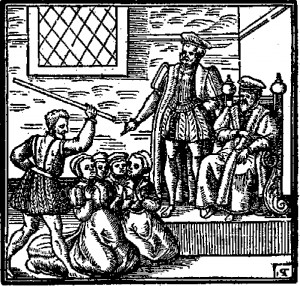
Witch-hunting in late 1500s, Britain
4. Japan and Portugal – Conflict and Cooperation
PSD:
- Edicts of Toyotomi Hideyoshi: Excerpts from Expulsion of Missionaries, 1587
Japan_Foreign_Religions slides: https://docs.google.com/presentation/d/11_STXjTHO2Qa9xmum8bq4qbkXOTi6x_fKy5c2rLNl7w/edit?usp=sharing
Japan+Christianity_Backgrounder (read this to get some context)
Activity:
After viewing the PPT, sort the various events into causes or consequences. CHY4U_Japan_Causes_Consequences (answers are on here)
key words:
social hierarchy, shogun, daimyo, Confucianism, Buddhism, Protestant Reformation, Catholic Counter Reformation, animist (belief that spirits occupy nature and other things), polytheistic (religion with multiple gods), Jesuit missionaries (Society of Jesus), feudalism, lord, vassal (someone who is the subject of someone else – e.g., the shogun distributed fiefs [grants of land] to the daimyo who became his vassals. In turn, the daimyo’s vassals were the peasants)
Questions for Cause-Consequence Sorting Activity
- What does today’s topic reveal about the Japanese rulers’ (shoguns’) attitudes toward religious differences?
- How is the Japanese attitude similar and/or different to the European examples (Catholic vs. Luther)?
- Use the inquiry question grid to construct some interesting questions about today’s topic.
Dutch East India Company (AKA the VOC) – what is its political significance (internationally)?
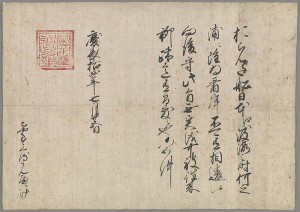
‘The “trade pass” (Dutch: handelspas) issued in the name of Tokugawa Ieyasu. The text commands: “Dutch ships are allowed to travel to Japan, and they can disembark on any coast, without any reserve. From now on this regulation must be observed, and the Dutch left free to sail where they want throughout Japan. No offenses to them will be allowed, such as on previous occasions” – dated August 24, 1609 (Keichō 14, 25th day of the 6th month); n.b., the goshuin (御朱印) identifies this as an official document bearing the shogun’s scarlet seal.’ (Wikipedia, VOC Opperhoofden in Japan, July 2, 2017, https://en.wikipedia.org/wiki/VOC_Opperhoofden_in_Japan)
Dejima – what does it tell you about isolation in Japan? But also about regional trade opportunities for the Dutch?
Saltpeter – what is it? Why is it significant to the Portugal-Japan relationship?
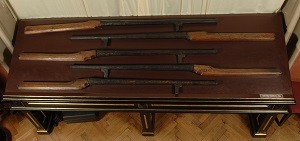
1635 Closed Country Edict: (don’t forget this is in addition to 1587 edict).
- Japanese ships are strictly forbidden to leave for foreign countries.
- No Japanese is permitted to go abroad. If there is anyone who attempts to do so secretly, he must be executed….
- If any Japanese returns from overseas after residing there, he must be put to death.
- All incoming ships must be carefully searched for the followers of padres.
1639 edict – give evidence of “suspicious” behaviour by the Portuguese (according to Japan).
Chronological Events:
1543 Portuguese arrive in Japan
1587 Edict bans Christian missionaries but allows trade
1596 San Felipe incident
1609 Trade pass (allows Dutch to trade with no restrictions) – note Dutch are Protestants
1635 Closed Country Edict
1636 Dejima is built to house Dutch traders
1637 Shimabara Massacre
1639 Edict bans foreigners altogether (except Dutch)
Timeline with Attitude
Instructions:
1. Use the events from the timeline above.
2. Place them on the timeline (progress [+1, +2, +3] or decline [-1, -2, -3] according to where they’d be from the perspectives of (one per group):
a) Shoguns (colour 1)
b) Christian Missionaries (colour 2)
c) Japanese Christians (colour 3)
d) Dutch traders
3. Draw arrows to show continuities (solid line) and arrows to show changes (broken line).
Note vocab of continuity/change: extreme, moderate, evolution, revolution, shift, same, different, add, continue, over time, quickly, slowly
4. in class:
a) The two groups that did each of the perspectives should share and see if their timelines are similar.
b) Each large group sends one or two people to the front to share with the rest of the class.
c) Everyone should record at least one other perspective on their timeline.
d) Now each individual writes a paragraph explaining which hypothesis they support. Use 3 pieces of detailed evidence, each with a well-explained persuasive argument. Hand in at end of class.
These websites on Japan are only for interest
Religion in Tokugawa Japan (Japan Society) * very useful context
Samurai Sisters (Women in World History)
Gender Differences in History: Women in China and Japan (Women in World History)
Japan, 1600-1800 (MetMuseum)
Tokugawa Shogunate Overview (Asia for Educators)
5. Aztecs and the Spanish – Conflict and Cooperation and Views of the Gods

- Skill: contextualization, historical perspectives
- we will practice with Columbus’s PSD (ship’s recorder) handout. CHY4U_Columbus_PSD (note the term “Eurocentric”)
Key Background Knowledge
- encomienda was a system in the New World in which the Spanish crown granted the labour of the Natives to the Spanish. The people were used to work the land. The person who controlled the encomienda was called the encomendero. Las Casas was once an encomendero. As you will see, the system was exploitative and cruel. It bore a lot of resemblance to medieval European feudalism with more cruelty.
Conflict-and-Cooperation-_Spanish_Origins (PPT 2020)
What did the Aztecs make of the Spanish? (Mexicolore on YouTube) – watch in class or at your table and identify the different ways that Spanish and Aztecs looked at gods. (historical perspectives)
- For La Malinche, listen to the audio and answer the questions on the handout.
Websites for your interest:
Despite Similarities, Pocahantas Gets Love, La Malinche Gets Hate. Why? (NPR)
Conquistadors: Cortes (PBS)
Conquest of Mexico Paintings (Library of Congress)
La Malinche
Translator for Cortes in the Aztec Empire (Diaz del Castillo PSD) – read the blurb and the PSD. Identify how he complements her. Note how complex her background was.

Sources:
Who Was La Malinche? (NY Public Radio) – 6: 50 – please listen
Hero or Traitor? (NPR article – you can read this if you want a better understanding of how La Malinche has been seen over time)
Identify various ways she was portrayed over time (4-6 ways). This tells us a lot about today, actually.
Las Casas
Read the Las Casas PSD. This is an excerpt from his book, The Destruction (Devastation) of the Indies.
Activity: decide where you’d place Las Casas on the following spectrum:
10 ——————————————————————–1
truly on the side a true advocate
of the Spanish for the Native people
(conquest and conversion)
Websites of Interest:
Las Casas and 500 Years of Racial Injustice (Origins: Current Events in Historical Perspective)
Las Casas debates the Subjugation of the Indians, 1550 (Gilder Lehrman Institute of American History)
Las Casas (Columbia College, Core Curriculum)
6. Kongo and Portugal: Conflict and Cooperation
- Read the letter by King Afonso of Kongo to the king of Portugal. Note his tone: is it dominant, subservient, other? Does this king write to the Portuguese king as an equal?
- Read the summaries of political/economic/social/religious aspects from the British Museum activity). Label each as one of those letters (or use four different colours).
- Conclude: what were the dominant motives for Afonso’s actions?
Conflict-and-Cooperation_Portugal _in_Africa (2020 PPT)
Websites of Interest for Kongo:
African Christianity in Kongo (Metropolitan Museum)
Kongo activity (British Museum)
7. Historiography: Galileo and Ricci
Skill: historiography (theories of history, how history is written, approaches to history) – this time – ‘great man’ theory. Please note: historiography is about approaches to history. Different types of historians approach things (information, data, events) in different ways. You do not have to agree with the great man theory as a way of interpreting history. You just have to understand how that theory does interpret history (according to SPA criteria).
Read the SPA criteria for great man theory (not a good theory, or one Ms. G agrees with; however, it makes the teaching of historiography a bit easier).
a) Galileo Galilei (Abjuration PSD)
Apply great man theory to Galileo using SPA criteria.
Sci_Rev_PPT_Slides_2019 (PPT) for background
website you could check out: http://newsroom.ucla.edu/releases/the-truth-about-galileo-and-his-conflict-with-the-catholic-church
b) Matteo Ricci (Europe and China, map)
Read and apply SPA criteria to Ricci then compare to Galileo: Backgrounder on Ricci and China (note: this content on China will be very important in unit 3. Meanwhile, note the difference on interactions between China and the west and Japan and the west).
Ricci websites (for your interest)
The Great Universal Geographic Map (World Digital Library)
Ricci: Missionary-Scholar (University of Minnesota Libraries)
Matteo Ricci and the Ming Dynasty (audio – BBC Radio) – really interesting and crucial context – useful up to 27 mins.
The Great Man Theory
Great Man Theory (Villanova University)
Eight Lessons from the Great Man (or Woman) School of Leadership (Forbes)
Confronting Columbus: Revisionism Versus Reality (Hampton Institute) – a criticism of Great Man Theory
8. Unit Culminating Activity: Global Gathering
See Documentation_for_history_essays_REVISED
- how to write proper bibliographic information on your notes
– see side page
